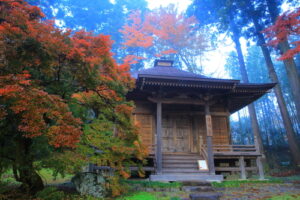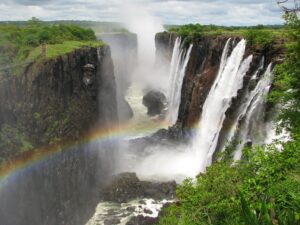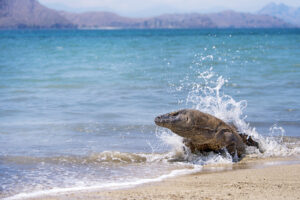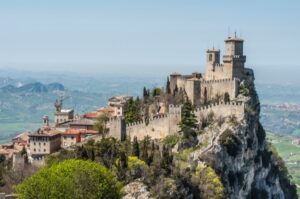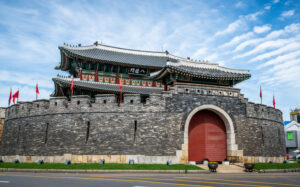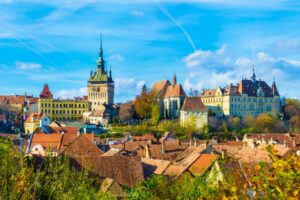| Registration Classification | cultural heritage |
| Registration Criteria | (2), (6) |
| Year of registration | 2011 |
Hiraizumi, located in southern Iwate Prefecture, is famous for Chuson-ji Konjikido, and the entire area is famous for being registered as a World Heritage Site. By the way, why is Hiraizumi registered as a World Heritage site?Surprisingly, you may not know!
Here, a World Heritage enthusiast explains in simple terms why Hiraizumi is a World Heritage Site in this issue. Read this and you will definitely learn more about Hiraizumi!
What is Hiraizumi – Temples, Gardens and Archaeological Sites Representing the Buddhist Pure Land?

Generally speaking, “Hiraizumi” refers to the town of Hiraizumi in southern Iwate Prefecture.This was once the location of a capital that spatially expressed the Pure Land philosophy that “one can attain Buddhahood by going to the other world after death. This was Hiraizumi, the capital of the Oshu Fujiwara clan in the 12th century. Although Chūson-ji, Hiraizumi’s representative temple, still exists today, few of the temples and gardens that once dotted the area remain.
For what reason is Hiraizumi on the World Heritage List?



Hiraizumi was recognized for the following
Registration Criteria (ii)
The point that Buddhism, introduced from China and the Korean peninsula, fused with the ancient Japanese nature worship as the Pure Land philosophy in the 12th century and blossomed in Hiraizumi.
Registration Criteria (vi)
The fact that Hiraizumi had a philosophy of architecture and gardens that spatially produced the Pure Land (Buddhist Land).
In other words,
Hiraizumi is a wonderful representation of the “afterlife” that we reach after death, and its architectural style and ideas continue to this day.
That is what I mean.
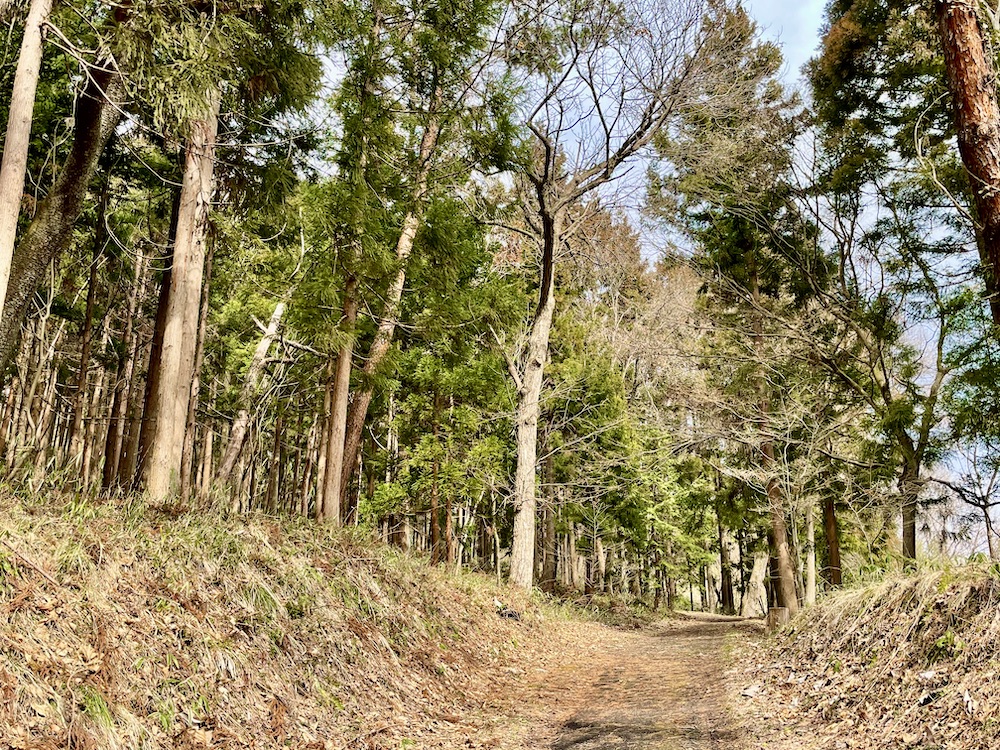


The actual registered site consists of five properties, including the ruins of temples and gardens created by three generations of the Oshu Fujiwara clan, including Fujiwara no Kiyohira.
・Chūson-ji
・Mōtsū-ji
・Kanjizaioin
・Muryōkōin
・Kinkeizan
Each of the four temples is a garden that represented the Buddhist Pure Land (Jodo). Let us explain them one by one.
Introduction to the constituent assets of Hiraizumi
1、Chūson-ji
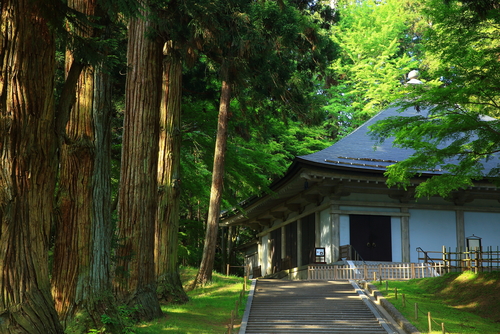


This temple was built by Kiyohira Fujiwara, the first generation of the Oshu Fujiwara clan, when he built Hiraizumi, and is famous for its golden Konjikido, built in 1124.It is built in the Buddhist architectural style of Ho-Sangen, which represents the Buddhist land of Amida Nyorai (the Pure Land). Incidentally, it is the oldest temple in Japan in terms of “Amida Hall architecture “.
Konjikido consists of a total of 11 Buddhist statues, with the center podium and both the right and left podiums centering on the three images of Amida. All of them are covered with gold leaf, and their gorgeous appearance is a true representation of the Pure Land of Ultimate Bliss. Although it is a Buddhist temple, the mummies of the four Fujiwara generations are housed on the altar inside the hall. The coffin on the central platform is Fujiwara no Kiyohira, and next to it are the coffins of his son Motohira and grandson Hidehira, with the head of his great-grandson Yasuhira, placed next to it.
For more information, click here↓



2、Mōtsū-ji
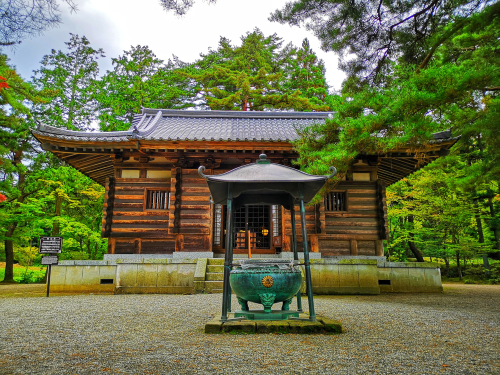


This is the site of a temple built by Motohira the 2nd. While Chūson-ji remains in its original form, most of the buildings here have been lost due to repeated disasters. However, the temple was once so vast that it is said to have had more than 40 halls (roofed buildings) and over 500 Zen monks.
It is no exaggeration to say that nothing remains of the temple, but there remains a waterway called “Yarimizu”, which draws water into a pond, and this is one of the largest waterways in Japan from the Heian period.
For more information, click here↓
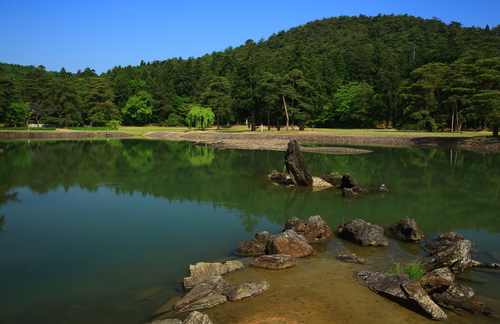


3、Kanjizaioin
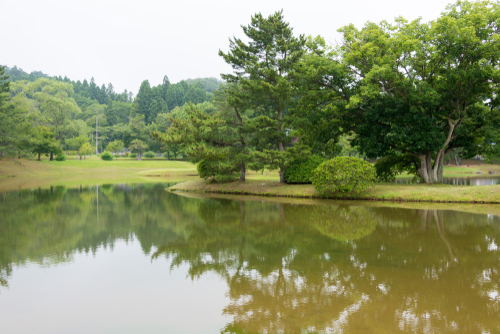


The site of a temple built by the wife of the second Motohira. Located next to Mōtsū-ji, the garden dotted with Amida halls was integrated with Mt. Kinkeizan in the background and represented the Pure Land.
However, the temple complex was lost in 1573. Today, almost no architecture remains and the area is a park. Only the location where the pond was located is still known today, so we can only get a small idea of the plot at that time.
For more information, click here↓



4、Muryōkōin
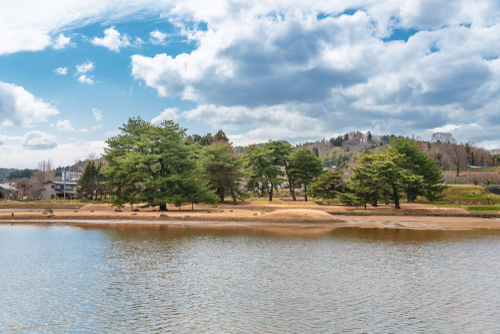


It is believed that there was a magnificent Amida hall modeled after the Byodoin Amida hall (Phoenix Hall) in Uji, built in the 12th century. There is also a reproduction of Muryōkōin in the “Esashi Fujiwara no Sato” in Oshu City, but it is estimated that the main hall was probably the same size as the Phoenix Hall in Uji. The building was designed so that the setting sun would set behind the main hall in the evening, with Mount Kinkeizan to the west of the building.
Today, the Amida Hall does not remain, and its location can only be determined from the remains. However, the sunset on the top of Mt. Kinkeizan can still be seen today, so it is possible to still admire the scenery that Hidehira saw at that time.
For more information, click here↓



5、Kinkeizan
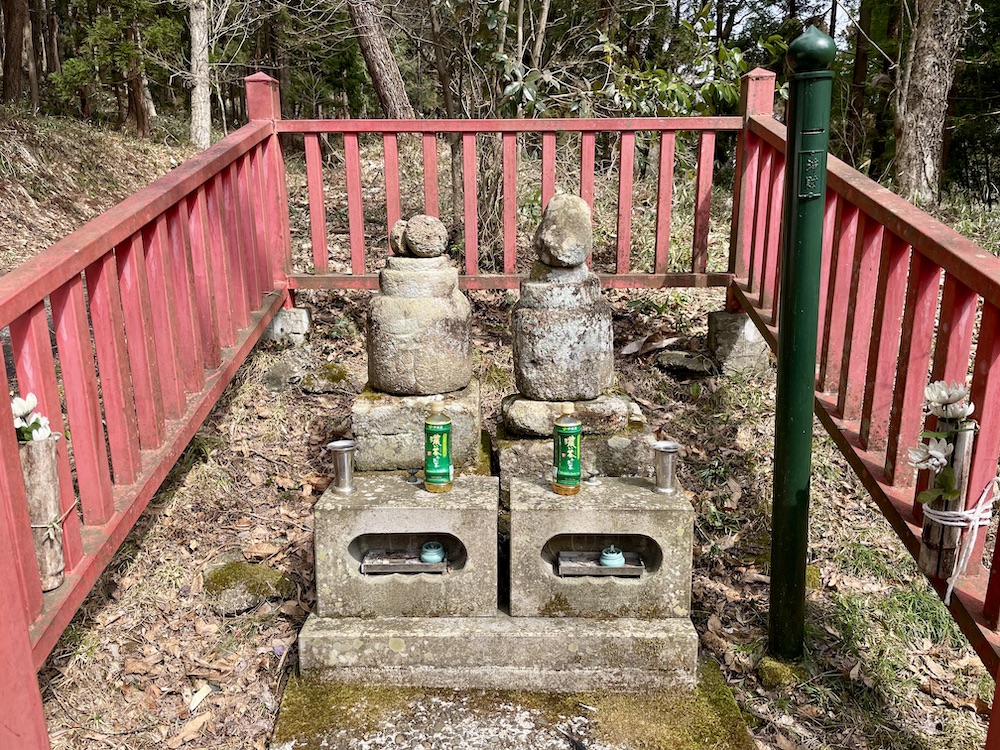


Although a small mountain at 98.6 meters above sea level, it actually played an important role in Hiraizumi.Temples built in Hiraizumi always placed importance on their location in relation to Mt. Kinkeizan, and the gardens built in each temple were designed to represent the Buddhist Pure Land in space, so that Mt. Kinkeizan was always included in the landscape.
Incidentally, at the entrance to the trailhead of Kinkezan, there is a small hall called Sende-do, where there is a tomb said to belong to Minamoto no Yoshitsune’s wife and son. Yoshitsune’s wife is not the famous Shizuka Gozen, but Gogozen, his regular wife.
For more details, click here↓



Extra Edition: Koromogawanotate



Koromogawanotate, located on a small hill beyond Muryōkōin, is said to be the final resting place of Minamoto no Yoshitsune, who was attacked by Yasuhira, the fourth generation of the Oshu Fujiwara clan, in 1189, and committed suicide here.And in the Edo period (1603-1867), Matsuo Place is known to have been visited by Matsuo, who wrote a poem, “The summer grass and the soldiers are the remains of a dream”. Although the site is well-known to the Japanese, it is not registered as a World Heritage site.
In addition, the surrounding Yanagino-gosho ruins were also included in the recommended properties when submitted to the World Heritage Center, but this was excluded at the time of registration.
World Heritage Mania Conclusions and Comments



Hiraizumi is one of the more confusing categories of Japan’s World Heritage sites, and some people may think that Chūson-ji is the only World Heritage site, since almost no form remains of any architecture other than Chūson-ji….
What is important, however, is that each of Hiraizumi’s temples embodied the Pure Land philosophy in this world, and when you look at the plots and surviving relics, you will realize that it was a capital city on a very large scale. Hiraizumi is highly regarded in this respect.
Incidentally, there are still many more ruins around the town of Hiraizumi, and we are currently working to expand the registration. These will include the “Yanagino-gosho Ruins” introduced in the extra section on constituent assets, the “Tatsuya Cave” where the legend of Sakagami Tamuramaro remains, the “Shiratoritate Ruins” and the “Chojagahara Abandoned Temple Site”. Hiraizumi still has the potential to expand, so keep your eyes on the future!
*The content here is a discussion derived through research by World Heritage enthusiasts. As for the data, interpretation differs depending on the medium.
